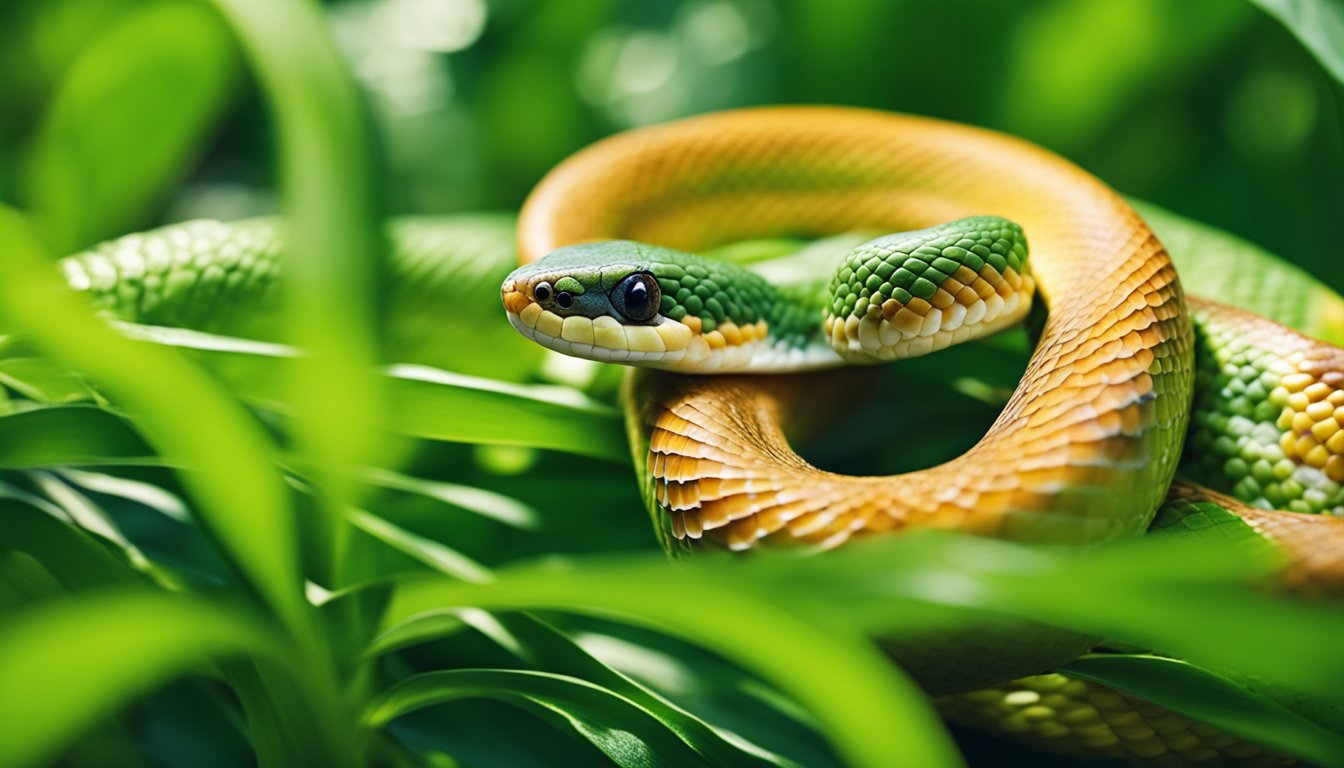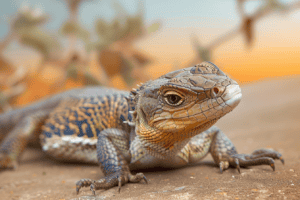Corn snakes are one of the most popular pets for reptile enthusiasts, especially for those who are just starting their journey into the world of scaly companions.
With their gentle nature and minimal care requirements, these snakes make perfect pets for kids who are curious about the animal kingdom.
Their scales glisten with a variety of colors and patterns, from bright oranges to deep reds, and even albinos that seem to shimmer like the morning sun on a dew-kissed leaf.

These slithering friends are not just a pretty face; they’re also fascinating creatures with behaviors and traits that can teach children about biology and the environment.
Corn snakes are known for their ability to adapt to different habitats, from forested areas to abandoned buildings, which shows their resilience and versatility.
This adaptability also makes them a captivating subject when considering how animals can live in harmony with changing environments.
As children learn about corn snakes, they’ll discover interesting facts about their diet, how they hunt, and the important role they play in the ecosystem.
Often, a corn snake will dine on small rodents, which helps control those populations and maintain a balance in nature.
Engaging kids with these facts not only informs them but also instills a sense of responsibility and respect for these colorful, friendly reptiles and the world they inhabit.
Discovering Corn Snakes
Get ready to meet one of the friendliest and most fascinating reptiles around!
These slithery creatures come in various colors and have captured the hearts of many.
What Are Corn Snakes?
Corn snakes are a North American species of rat snake that thrive in the wild and are also popular pets.
They grow to be about 3 to 5 feet long and live for around 6 to 8 years in the wild.
However, with proper care, they can live up to 20 years in captivity!
They’re known for their docile nature, making them excellent companions, especially for those new to snake care.
Interestingly, their name comes from the corn-like pattern found on their bellies and the fact that they were often spotted in cornfields, where they would hunt for rodents.
Significance of Colors
Corn snakes are admired for their incredible variety of colors, known as ‘morphs’.
These morphs don’t just make them look unique; they can tell us a lot about a snake’s habitat and evolution.
Colors and patterns help them blend into different environments, from leafy underbrush to sandy soils.
Breeding in captivity has led to even more stunning morphs, from albinos with pure white scales and pink eyes to “sunkissed” morphs with orange hues so bright they seem to capture the sun’s warmth.
Each pattern and color variation is like a work of art, making every corn snake distinct.
Corn Snake Habitat

Corn snakes are fascinating creatures that live in a variety of environments.
They are adaptable and thrive both in the wild and when cared for by humans.
By exploring where corn snakes make their homes, we can appreciate their resilience and the importance of their natural habitats.
Natural Homes
Corn snakes are typically found in the southeastern United States, where they have made their homes in a mosaic of environments.
They prefer regions with a balanced mix of forests and fields, where they can bask in the sunny patches and retreat to the cooler, shaded areas for rest.
It’s common to spot these colorful snakes stretched out in overgrown fields, meandering through hardwood forests, or even climbing in the shrubby areas.
During cooler months, they take refuge under loose tree bark or in small mammal burrows to keep warm.
Their nesting spots are fascinating because they use the natural insulation of the earth.
Have you ever wondered if a hidden world exists right beneath your feet? Well, for corn snakes, that’s their cozy winter hideout!
Corn Snakes in Captivity
Interestingly, corn snakes are also popular pets due to their docile nature and relatively simple care requirements.
When they live with humans, their habitats are quite different from those in the wild.
They reside in enclosures that humans have thoughtfully designed to mimic their natural surroundings. These enclosures often include elements like:
- A heat source for basking, such as a lamp or under-tank heater
- Substrate, which is bedding like aspen shavings or newspaper, to simulate the forest floor
- Hiding spots, which could be anything from a hollow log to a specially made hide box, giving them a sense of security
- Climbing branches, giving these naturally curious creatures an opportunity to explore and exercise
- Water bowl, ensuring they stay hydrated, which is just as important as it is in the wild
Corn snakes in captivity need these features to stay healthy and happy, just like in their natural homes.
Seeing how corn snakes live in captivity can be a window into their lives in the wild.
It shows just how much we can learn about caring for the environment by caring for animals. Isn’t that something incredible?
Caring for Your Corn Snake

Corn snakes make fascinating pets with their bright colors and gentle nature.
It’s important to provide the correct diet, a comfortable habitat, and regular handling to form a bond with these scaly companions.
Now, let’s slide into the details of how to best care for your corn snake.
Dietary Needs
Corn snakes are carnivorous and thrive on a diet primarily composed of rodents.
It’s fascinating to watch them enact their natural hunting behavior even in captivity.
A young corn snake may eat once every 5 to 7 days, while adults need a meal only once every 7 to 10 days.
Consistency is key in their feeding schedule.
The size of the food should be relative to the girth of the snake’s body; a good rule of thumb is to offer prey that is about the same size or slightly larger than the snake’s midsection.
Feeder mice are a common choice, with many owners opting for pre-killed varieties to avoid potential harm to the snake.
Live prey, while more natural, can injure the snake if it defends itself.
It’s best to thaw frozen rodents to room temperature before offering them to your pet.
Ensure fresh water is always available in a shallow bowl, one that won’t tip over easily when the snake explores or slithers through it.
Housing Your Slithery Friend
Imagine a cozy home with everything you need within a flick of your tail—that’s what a corn snake’s habitat should be like.
A young corn snake can start in a 10-gallon tank, but full-grown snakes may require a 20 to 40-gallon space to move freely.
It’s like having their own room to stretch, climb, and slither around.
The enclosure must have a lid, as these curious creatures can be quite the escape artists.
Temperature is vital; a gradient from 75°F on the cooler side to 85°F on the warmer end allows the snake to regulate its body temperature.
Heat lamps or under-tank heaters can be used to achieve this gradient.
Another crucial element is the substrate—the material that lines the bottom of their habitat.
Aspen shavings are a popular choice as they are soft and allow the snake to burrow.
For hiding and feeling secure, don’t forget to add hide boxes—a necessity for their well-being.
Handling and Bonding
Have you ever seen a snake respond to a gentle touch?
Corn snakes can learn to recognize and feel comfortable with their human companions through regular, careful handling.
It’s a bond that forms over time, with trust being the foundational element.
Young snakes might be a bit skittish and may need shorter, more frequent handling sessions to get used to their owner.
Don’t handle them for at least 48 hours after feeding to avoid regurgitation, which can be distressing for them.
When picking up your corn snake, be gentle and support their body.
They’re not aggressive, so they should settle into a steady rhythm of movement in your hands.
Observing your corn snake’s behavior and mood is also important; if they seem stressed or hiss, it’s a sign to give them some space.
Regular interaction not only strengthens your bond but also keeps the snake tame and accustomed to human contact.
Frequently Asked Questions

When it comes to understanding these striped friends, kids often bubble with questions.
This section sheds light on some of the most curious wonders about corn snakes, a type of rat snake native to North America.
How can you tell if a corn snake is a good pet for kids?
Corn snakes are known for their docile nature, which makes them suitable for children who are fascinated by reptiles.
They are not venomous and generally have a calm disposition when handled gently.
If a child shows interest in learning about snake care and demonstrates responsibility, a corn snake could be a delightful pet.
What do these colorful slithering friends like to eat?
In the wild, corn snakes feast on a diet primarily of rodents, like mice, which they subdue with their constriction technique.
As pets, they thrive on a similar diet of pre-killed or frozen mice, making their feeding routine straightforward for young snake enthusiasts to understand.
Where can you find corn snakes in the wild?
Corn snakes adorn the Southeast United States with their presence, commonly found in fields, forest openings, and abandoned buildings.
They enjoy climbing trees and can often be spotted basking in the sun on a warm day.
Can a corn snake harm your furry family pet?
Corn snakes pose little to no threat to other pets due to their gentle nature.
However, it’s important to supervise interactions and provide separate spaces for pets to ensure peace and safety for all.
What are some of the cool ways corn snakes attract their mates?
During the spring, corn snakes put on quite a show to attract mates. They engage in captivating dances and emit alluring pheromones.
The male flicks his tongue and swirls around the female in a hypnotic ritual of courtship.
Do corn snakes prefer to live alone or with buddies?
Corn snakes are solitary creatures, preferring their own company.
They only seek out others during breeding season; otherwise, these serpents enjoy the peace of their own territory.
When kept as pets, they should be housed individually to mimic their natural preference for solitude.









